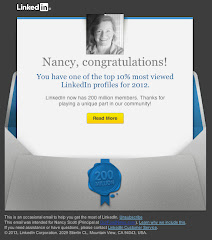Attorney Nicholas Wooldridge
has been researching the marketing side of the legal business. What he learned took this lawyer from mad marketing to the
peaceful valley.
After some thought, Wooldridge decided that one assurance ties all strands
of legal service together. One promise covers every client’s need—from getting
a will made, to cleaning up a tax issue, from overseeing a bankruptcy, to
managing a high-stakes merger, to defending an assault charge. Every client
wants peace of mind.
Mad Marketing Tactics To Replace
Mr. Wooldridge outlines some common sales pitches and mad marketing
moments that miss the mark.
• Selling time. “Never in history
has anyone bought or sold even one second in time,” he says. Time is not a
commodity and, therefore, has no innate value.
• Selling expertise or excellence. Specialized knowledge has no intrinsic value, but proves itself only when applied to a client’s particular need. Ditto “excellence.”
• Selling solutions. Wooldridge thinks solution without context adds up to another meaningless buzzword. Before solutions, we need to hear the client’s problem … which may turn out to be less of a problem than a need for information, reassurance, or guidance.
• Selling value. Obviously, value doesn’t materialize until the client decides. Our job is to help clients pinpoint need and then offer specific solutions.
Hmmm. Our clients' peace of mind … a worthy aspiration to consider. Thanks, Nicholas.
-- scrubbed by MarketingBrillo





